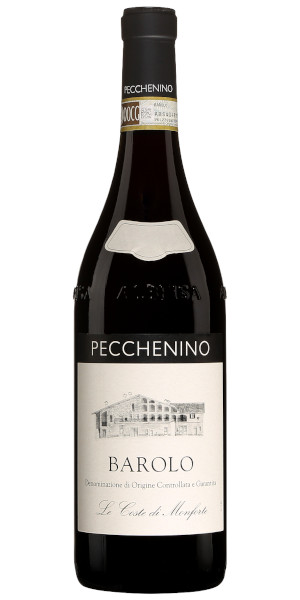Pecchenino Barolo Bussia DOCG (750ml)
-
Wine Type
Red Wine
-
Size
750ml
-
Vintage
2017
-
Country
Italy
-
Region
Piedmont
-
Sub-Region
Barolo
-
Grape
Nebbiolo
-
Farming Method
ConventionalMost products with this label come from producers who do their best to avoid any intervention at all but it’s possible that some of the aforementioned preventative measures and additions are deemed necessary. Learn More
-
ABV
15%
-
Food Pairing
TrufflesMushroom dishesRed Meat
The Pecchenino winery has always been a family business. The first documents attesting the winemaking activity date back to the end of the 20th century, when the winery, managed by grandfather Attilio, had little more than 8 hectares. In the 1970s, the reins of the company passed into the hands of his son Marino and later, at the end of the 1980s in line with the generational changeover, his sons Orlando and Attilio took over the business. It is to them that we owe the expansion of the vineyard area which today consists of 35 hectares, divided between the municipalities of Dogliani, Monforte d’Alba and Bossolasco where they grow a range of traditional Piemontese grapes.
The vineyards are managed with the highest respect for nature, biodiversity and environment, by adopting a sustainable management in order to focus on the quality of grapes.
Tasting Notes
Garnet red colour. Give this wine to open up; the nose will reward you with complex floral and red fruit notes, liquorice, spice and tobacco. The palate is fine with sensations of ripe red fruits. The taut and compact tannin makes the wine very classic. Vibrant and vertical acidity. Extremely elegant and refined. Drink this Barolo alongside fresh pasta with meat sauce or truffle, roasted or braised red meats, game or mature cheeses.
Method
Nebbiolo grapes from the single vineyard, Bussia, are harvested the third week of October. The vines are guyot trained and have a density of 5000 plants per hectare. The age of the vineyard is 18 years. The soil is calcareous-clayey with brownish marls and is exposed to the south-west. The grapes are only destemmed and then left to ferment in steel tanks for about 3 weeks at 27°C. The wine remains in the tanks in contact with the skins for a further 4 weeks in post-fermentation maceration using the ancient submerged cap method. After racking, the wine remains in steel tanks for malolactic fermentation and is then transferred to barrels to age; 24 months in large oak casks and 12 months in cement tanks.
Our Thoughts
This wine exudes intensity, mystery, intrigue, and style. Aromas of sour cherry candy, rosehip, pouch tobacco, your favourite leather jacket- it’s all on display here. Simultaneously rich and ripe while maintaining nuance and subtlety: it’s textbook Barolo. If you’re after something for the cellar then your timing is perfect as this wine is just entering its drinking window and showing wonderful promise for years to come.



Reviews